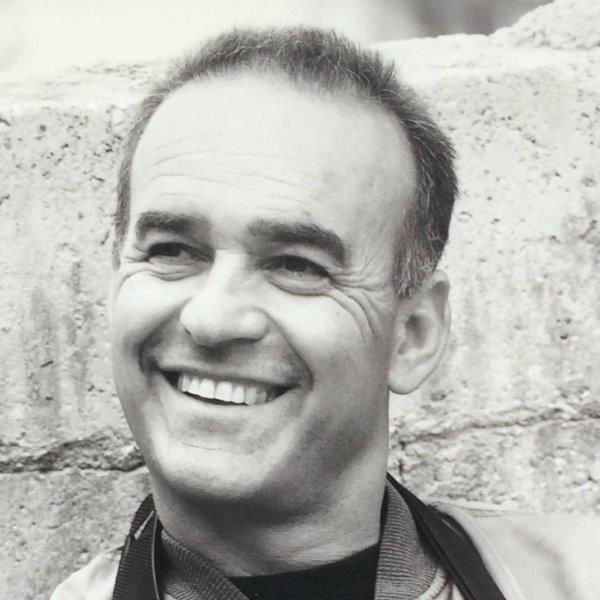by Paris Pompor
When it comes to opening sequences, Whitney ‘Can I Be Me’ is faultless, drawing the viewer in immediately with a mix of sorrow and elation.
From blackness, an utterly gorgeous aerial shot of the City of Angels materialises, golden and sparkling like a story book vision of heaven. The sound of a chopper fades in, then sirens and eventually the crackle of news and paramedic radio communications. All is not right in Los Angeles tonight. The world has lost one of its most remarkable and bankable voices
As the Beverly Hills Hotel comes into view, a disembodied voice laments: “People say Whitney died of an overdose of drugs… I know Whitney Houston actually died of a broken heart.”
If you’re already reaching for a tissue, go easy, you’ll find more use for those over the next 80 minutes.
Yet the real genius of this short opening sequence, is that within seconds, as the aforementioned images and sobering words are still sinking in, the ominous chopper sound has been replaced by a roaring concert crowd. Again, our view is overhead, as thousands of skyward stretched hands holding candles appear. In an instant, we’ve time traveled back 13 years. Whitney is alive, in good spirits and in fine vocal form.
Her beautiful, joyful face in close-up, is singing a verse to one of her big hits: I Will Always Love You. And though tired, she’s enjoying every moment. Anyone familiar with the song (like the adoring fans who have filled the arena on screen) knows where this is heading and yet we can’t help but marvel afresh at how she will soar in a moment when called upon to reach those heart-wrenching chorus notes. If there was a roof on this venue, you’d better hope the engineers knew how to secure it against Whitney’s power.
But before she lets rip, Whitney and the filmmakers have one last opening-hand trick up their sleeves: Whilst there’s usually a pause for breath at the end of the verses before that famous refrain, tonight the singer extends it for what seems like minutes, milking the quiet before the storm for all its worth. Time stops and the band falls silent. Only the cheering crowd fill the void as Houston takes a few animated deep breaths, looks around curiously, then almost comically, before allowing a number of endearingly quizzical expressions to pass across her face. Then BANG! A single drum breaks the spell like a gunshot and she nails the rousing chorus from The Bodyguard. It’s a chorus – and repeat performance – that without doubt made the 1992 film she starred in with Kevin Costner a monster success at the box office and secured the accompanying album “best-selling soundtrack of all time” status notching up more than 45 million sales worldwide.
How could this same woman, this same voice, have fallen so far from grace and become so derided less than a decade later?
“She was so talented but had such a horrible demise at the end,” sighs Nick Broomfield, one of two directors behind Whitney Can I Be Me, a film that wouldn’t be screening at Sydney Film Festival this month if the Houston Estate had won their day in court. “I think people have become so judgmental in a sense about the way she ended so tragically.”
After being found unconscious in a Beverly Hills Hotel bath in 2012 and later pronounced dead, many sang her praises and tributes flowed, but the damage was done. Although at her height, she was one of the most successful African-American artists to crossover into pop and mainstream stardom, her relationship with New Edition singer turned solo “bad boy” Bobby Brown, alongside addiction, tabloid beat-ups about her sexuality, and some of the most vitriolic criticism ever levelled at a singer, meant her legacy was tainted.
Though Broomfield wasn’t necessarily a fan when he started the film (“I am a fan now,” he assures), he was keen to set the record straight.
“The idea was to sort of reassess her career and to try and celebrate her achievements and what an amazing person she was rather than [let her] disappear into the awfulness of the end, and the Bobby Brown relationship,” Broomfield tells FilmInk.
“I knew remarkably little about her, which I think is how you make a good documentary: You discover a point of view as you’re making it. I remember being worried I was going to make a negative film about her initially, but that changed a year in.”
12 months after starting his film, the director stumbled upon something startling. It was the kind of unearthing every documentarian dreams of.
“I discovered a hundred hours of unreleased footage…” explains Broomfield, “which was so revealing of who Whitney really was. People won’t have seen this side of Whitney before.”

The 100 hours of behind the scenes film shot backstage, in hotel suites and at parties, had been sitting in Austrian filmmaker Rudi Dolezal’s attic. From Whitney goofing around with Bobby Brown, through to intimate close-ups, somehow even when cracks appear Houston rarely looks less than adorable.
The tip off for this footage came from, maybe you’ve guessed it, a former bodyguard.
That minder – David Roberts – also appears in Broomfield’s documentary, pointing out how similar real life was to the movie blockbuster The Bodyguard (which is coincidentally being staged as a musical in Sydney right now). Roberts quips that the main difference between real life and Hollywood, is that he was never shot at, but his affection for Whitney is clear. He’d tried to warn the star’s inner circle that things were going off the rails, but it fell on deaf ears. Similarly, Houston’s best friend, dedicated assistant and the woman who appears in so many shots, Robyn Crawford would learn that having Whitney’s best interests at heart, wasn’t necessarily everyone’s modus operandi.
“He was remarkably hard to find,” says Broomfield of Austrian Rudi Dolezal and his buried footage. “He’s now co-director on this film. I think Rudi didn’t want to be found… He’d obviously been very close to her to get this incredible access, but then when she slid into drugs around 2000 he didn’t really know what to do with the footage or how to finish it. He’d shot these amazing performances of Whitney’s too… You can see the pain she’s going through to give the audience that complete performance. It’s the most moving footage I’ve ever seen of Whitney on stage.”
Like Broomfield, Dolezal is no stranger to music documentaries, having turned out ones on The Rolling Stones, Frank Zappa, Flaco, Michael Jackson and Freddie Mercury. Broomfield’s own extensive filmography includes 1998’s Kurt & Courtney and 2002’s Biggie & Tupac, both not without their controversy.
Given the life stories of musicians often follow the same arc (from obscurity, to fame, to addiction and an attempted comeback) Broomfield was keen to find a new form and avoid the familiar trotting out of famous people waxing lyrical about the subject.
“I think the formula for making music documentaries is very tired,” says Broomfield. “It’s very easy and unimaginative, and we wanted to tell something very different. There are very few talking heads in the film, it’s mainly their voices over footage of Whitney. And there’s a lot of Whitney talking. She is someone who could be very honest and perceptive about herself. As much as possible we’ve used her voice rather than having the Bonos sitting around talking again in that tired way. When we cut the film we kept asking ourselves: Do we know what Whitney is thinking or feeling in every single part of the film?”
It’s this approach that will endear the film to fans, who will love the way she comes back to life for the duration.
“The emphasis of the film is to really understand Whitney, not to condemn her or judge her. So many people judged her. She became the butt of so many late show jokes. I think Whitney was a very vulnerable person. She wasn’t enormously secure. She had a lot of self-loathing. The criticism she came in for at the end of her life really contributed enormously to her drug addiction. People were so unforgiving of her. If you listen to a lot of the David Letterman jokes in her last few years, she was ridiculed [for] her relationship with Bobby Brown. This really destroyed her. From being so popular and having so much adulation, the fall was too much for her.
“I did a radio interview with someone who had seen Whitney years and years ago and had written a scathing review of her,” continues Broomfield. “She saw [our] film… and said she felt so ashamed of what she’d written because she now understood a whole other side to Whitney and could see now and understand the pressure that Whitney was under.
Viewers are left to make up their own mind about Bobby Brown and his influence while the two were together, although it’s quite clear he wasn’t the one to introduce Whitney to drugs.
“It’s a very emotional experience,” Broomfield says of his documentary. “I think for the first time people will see… a Whitney they probably have never seen or understood before. Whitney gave so much to the world; she made so many people so happy. She literally sung herself out.
“I have to confess that me and the editor would often be fairly choked up… I thought, my god I must be getting old. The first time I screened it with an audience… my friend next to me seemed to be having problems with her contact lenses and then I realised she had been sobbing uncontrollably through the film. I realised it was having such an impact on people. They were literally driven to tears by her story. My friend commented: I’m so glad the credits were so long because I was able to get myself together by the end.”
Whitney ‘Can I Be Me’ premieres in Australia at the Sydney Film Festival in June. It will then release in cinemas from June 15, 2017.



